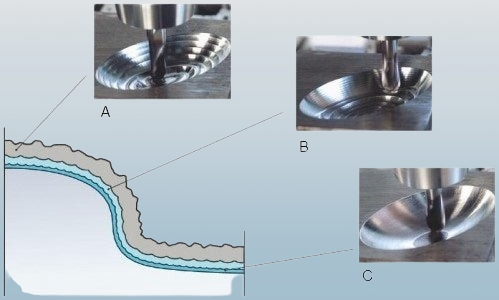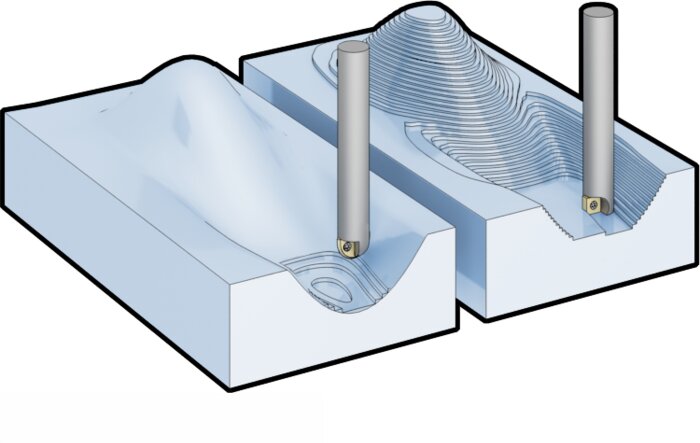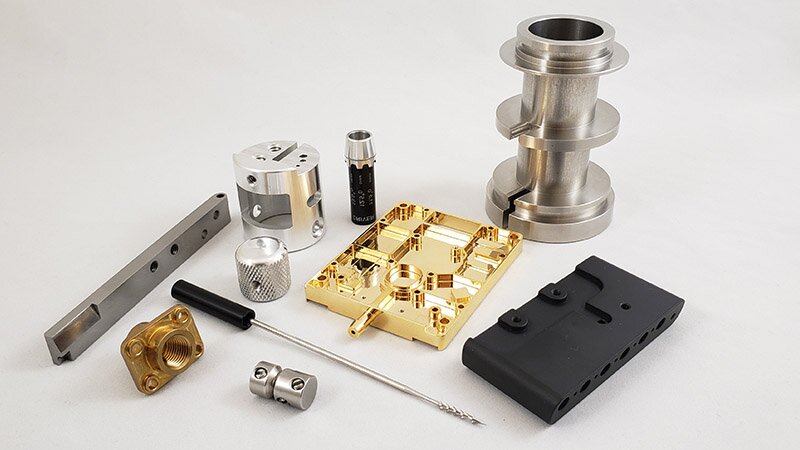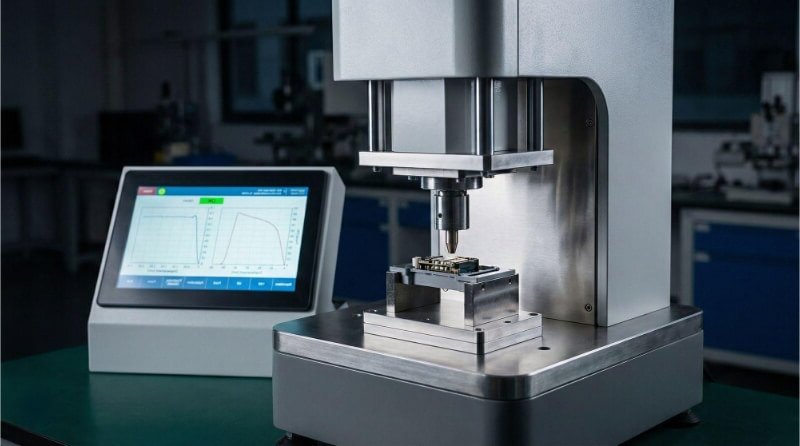Profile milling is a key machining process that shapes parts by removing material along the contours of a workpiece. Profile milling is the solution if you want precise and efficient manufacturing for complex shapes. Many industries rely on it to produce parts that meet specific design specifications. However, some challenges in achieving perfect results might concern you. Luckily, we’ll explore how profile milling can help address these.
Profile milling helps engineers and designers achieve high levels of detail and dimensional accuracy. Interested in learning more about how profile milling can benefit your projects? Please keep reading for a deeper dive into its applications and advantages.

What is Profile Milling?
Profile milling refers to a process in which a rotating cutting tool shapes the surface of a material along a predefined path. This allows for the creation of complex profiles and shapes. It is typically carried out using CNC machines, which allow precise control of the tool’s movement along the material.
Milling machines use rotary cutters to remove material from a workpiece. There are different types of milling machines, such as vertical and horizontal mills, but they all share the same basic principles. The workpiece is held while the cutter rotates, moving along the surface to carve out the desired profile.
This method speeds up production while keeping tight tolerances. It’s used for aerospace components, automotive parts, and custom prototypes. Less manual work means lower costs and fewer errors.
How Profile Milling Works: A Step-by-Step Guide
Profile milling is a precise process that requires careful preparation and setup. Here’s a breakdown of how it works, from design to the final product.
Step 1: Design the Part and Create Toolpaths
The process starts with designing the part. This is usually done using CAD software. Once the design is ready, toolpaths are created. Toolpaths show the cutting tool’s path to shape the workpiece according to the design.
Step 2: Select the Cutting Tool
Choosing the right cutting tool is key to getting the right finish. The type of material, the shape of the part, and the finish needed all affect the choice of cutting tool. Standard tools used in profile milling include end, ball, and face mills.
Step 3: Secure the Workpiece
Before milling starts, the workpiece needs to be securely fixed to the CNC machine’s table. This can be done with clamps, a vise, or a custom fixture. The workpiece must stay in place to avoid inaccuracies or defects in the finished part.
Step 4: Set Up the CNC Machine
After securing the workpiece, the CNC machine must be set up. The toolpath is loaded into the machine’s controller. The cutting tool is installed, and the machine’s settings are adjusted. Operators must set the feed rates, spindle speeds, and cutting depths based on the material and tool used.
Step 5: Roughing Pass (Optional)
In some cases, a roughing pass is done before the finishing pass. This step quickly removes large amounts of material, getting the workpiece closer to its final shape. A larger cutting tool and higher feed rates speed up this stage.
Step 6: Finishing Pass (Profile Milling)
The finishing pass is the final step. A finer cutting tool is used to get the exact dimensions and smooth surface finish. The cutter follows the toolpath and shapes the workpiece to create the desired profile.

Tools Used in Profile Milling
Cutting tools are essential to the profile milling process as they perform the material removal. The most common cutting tools used in profile milling include:
- End Mills: These are the most commonly used tools in profile milling. End mills come in various shapes, such as flat, ball, and corner-radius types. They are versatile and can handle a wide range of materials.
- Ball Nose End Mills: Ideal for creating smooth, rounded profiles and finishing complex shapes, ball nose end mills are used when intricate curves or 3D surfaces are required.
- Face Mills: These are typically used for roughing passes, where a large material area must be removed quickly. Face mills have multiple cutting edges and are effective for surface finishing.
- Tapered End Mills: Used for machining angled surfaces and contours, tapered end mills help create features requiring precise angle control.
Types of Profile Milling Operations
Profile milling includes several operations suited to different design needs and material types. Below are the most common types of profile milling used in manufacturing today.
2D Profile Milling
2D profile milling creates parts with flat or two-dimensional features. This operation is ideal for cutting simple shapes, such as straight lines, arcs, and sharp corners. The cutting tool moves along the X and Y axes to follow the two-dimensional design and create the part’s outline.
2D milling is efficient and commonly used when precise, simple shapes are needed. It’s often used in industries that produce flat plates, brackets, and panels. It’s a reliable choice when the part’s geometry is confined to one plane.
3D Profile Milling
3D profile milling is used for creating parts with complex, three-dimensional shapes. This operation can handle intricate surfaces with curves, slopes, and angles. The cutting tool moves along all three axes—X, Y, and Z—allowing it to follow the exact contours of the part and create detailed shapes.
This type of milling is ideal for components with complex designs, like molds, die-castings, and parts used in the aerospace and automotive industries. While 3D milling takes more time than 2D milling, it’s essential for parts with intricate details.
Contour Milling
Contour milling cuts a part’s edge or boundary to a specific profile or contour. This operation creates parts with curved edges or non-linear shapes. The cutting tool follows the contour path, gradually removing material to form the desired profile.
Contour milling is often used to make parts with curved features, such as custom panels, body parts in automotive manufacturing, or complex housing components. The tool’s path can be adjusted to follow the exact contour of the design, making it very versatile for various applications.

Benefits of Profile Milling
Profile milling offers several benefits, making it a preferred choice in many manufacturing processes. Let’s explore the top advantages that make it stand out.
High Precision and Accuracy
The ability of CNC machines to control the cutter’s movement ensures that profile milling delivers precise results every time. This level of accuracy is essential in industries that require tight tolerances.
Versatility
Profile milling can be applied to various materials, such as metals, plastics, and composites. Whether you’re working with aluminum, steel, or more specialized materials, profile milling provides the flexibility to meet your needs.
Cost-Effective for Complex Designs
While traditional machining methods may struggle with complex designs, profile milling can efficiently produce intricate parts at a lower cost. Handling complex shapes without requiring multiple steps reduces labor and production costs.
Fast Turnaround Times
Due to its high precision and automation, profile milling allows manufacturers to reduce production times. This primarily benefits businesses that must meet tight deadlines or require rapid prototyping.
Challenges and Considerations in Profile Milling
While profile milling offers many benefits, manufacturers need to address some challenges. Let’s take a closer look at some common challenges in profile milling.
Tool Wear and Maintenance
Tool wear is a natural part of milling, especially when cutting hard materials or working at high speeds. Over time, the cutting edges of tools can dull, which reduces their effectiveness and the precision of the operation. This wear can cause problems like poor surface finishes, dimensional errors, and longer production times.
Regular maintenance is key to extending the life of cutting tools and ensuring optimal performance. Manufacturers must use the correct cutting parameters, such as speed and feed rate, to minimize wear. Timely tool replacement and proper storage also help maintain tool quality and ensure a consistent milling process.
Vibration and Chatter
Vibration and chatter are common problems in milling. These issues can lead to poor surface finishes and dimensional inaccuracies. Vibration usually happens when the cutting tool or workpiece is not securely held or the cutting parameters are incorrectly set. It can cause the tool to bounce or move erratically, leading to uneven cuts and decreased accuracy.
To prevent vibration and chatter, manufacturers should secure the workpiece properly and adjust machine settings, such as feed rate and spindle speed. Using high-quality, rigid tools and machines can also help minimize vibrations.
Surface Finish Issues
Surface finish problems can arise from several factors, including tool wear, incorrect cutting parameters, or material inconsistencies. For example, using a too-high feed rate or an incorrect cutting speed can result in a rough surface.
To improve surface finishes, manufacturers must choose the right cutting tools and settings for the material. Using finer tools during finishing passes can help achieve a smoother surface. Applying coolant correctly can also reduce heat buildup, affecting surface quality.

Best Practices for Effective Profile Milling
It’s important to follow some key practices to get the best results in profile milling. Here are some simple tips.
Select the Right Tooling
The type of material, part shape, and design will decide which tool to use. Carbide tools work best for harder materials because they last longer. For softer materials, high-speed steel tools can be a better option.
Speed and Feed Rate Optimization
The speed is how fast the tool rotates, and the feed rate is how fast the material moves. Both need to be set correctly for the material and tool used. The surface finish will suffer if the speed or feed rate is too high. If it’s too low, the process may be slower than needed.
Optimize Cutting Conditions
The cutting conditions can affect the outcome of the milling process. The depth of the cut should be adjusted to avoid putting too much stress on the tool. Coolant is also essential. It helps reduce heat and friction during cutting. Proper cutting conditions minimize tool wear and improve surface quality.
Program Efficient Tool Paths
Efficient tool paths save time and improve results. Program the CNC machine to move the tool as directly and smoothly as possible. Avoid unnecessary movements that waste time. Efficient paths also help reduce tool wear and material waste.
Regular Maintenance
Regular maintenance is key to keeping machines working well. Check the machine regularly for issues like misalignment or lack of lubrication. Clean the machine and calibrate it to maintain precision. Also, check the condition of cutting tools and replace them when needed.
Applications of Profile Milling
Profile milling is a versatile process with applications across many industries. Let’s examine some of its most common applications.
Automotive Industry
In the automotive industry, profile milling creates precise parts like engine components, brackets, and structural elements. The accuracy achieved by profile milling ensures that automotive parts fit together perfectly, improving overall vehicle performance.
Aerospace
Aerospace manufacturing requires highly high tolerances. Profile milling helps create detailed parts for aircraft components, including fuselage frames, engine parts, and other precision instruments. The ability to work with complex geometries makes profile milling crucial in this field.
Medical Devices
Profile milling is often used in the medical device industry to produce custom implants, surgical instruments, and other specialized devices. The process’s precision ensures that each part meets the exact specifications required for patient safety.
Electronics
Profile milling produces enclosure, connectors, and other components in the electronics industry. This process allows manufacturers to create small, intricate parts with complex profiles.
Conclusion
Profile milling is a precise machining process that shapes parts by removing material along predefined contours. It’s ideal for creating simple and complex shapes and is commonly applied in industries like automotive, aerospace, and medical manufacturing.
Interested in learning how profile milling can improve your production process? Contact us today for a custom quote, and let’s discuss how we can help streamline your manufacturing needs.
Hey, I'm Kevin Lee

For the past 10 years, I’ve been immersed in various forms of sheet metal fabrication, sharing cool insights here from my experiences across diverse workshops.
Get in touch

Kevin Lee
I have over ten years of professional experience in sheet metal fabrication, specializing in laser cutting, bending, welding, and surface treatment techniques. As the Technical Director at Shengen, I am committed to solving complex manufacturing challenges and driving innovation and quality in each project.




